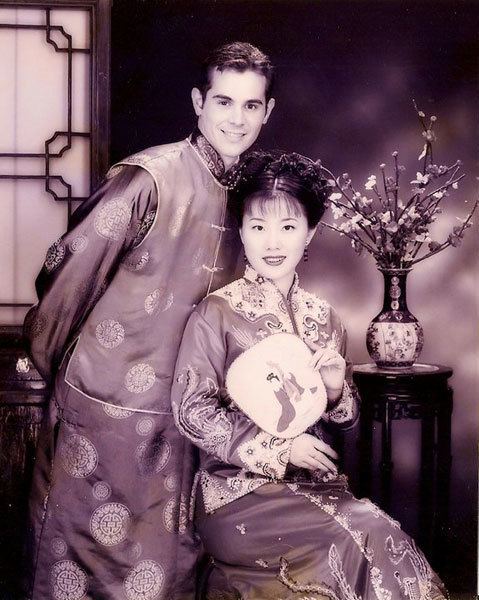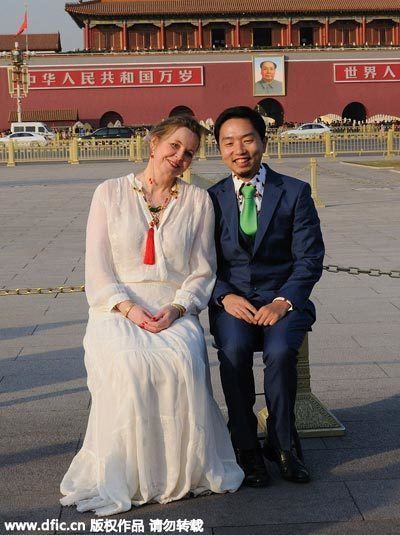Oct 2014 spotlight transnational marriages and their problems
An international marriage, or transnational marriage, is a marriage between two people from different countries. A variety of special issues arise in marriages between people from different countries, including those related to citizenship and culture, which add complexity and challenges to these kinds of relationships.
Contents
- Oct 2014 spotlight transnational marriages and their problems
- Motives
- History
- Historical attitudes
- Modern attitudes
- Third culture kids
- One debate should national laws discourage or encourage transnational marriage
- United States
- Pakistan Afghanistan
- References

Culture and language differences are often encountered as obstacles, although there are exceptions. Where ethnic groups are divided between multiple sovereign states (irredentism or stateless nations) or places which once shared common citizenship are separated by borders of newly-independent nations (decolonisation), transnational marriages do not necessarily infer different cultures.

In an age of increasing globalization, where a growing number of people have ties to networks of people and places across the globe, rather than to a current geographic location, people are increasingly marrying across national boundaries. Transnational marriage is a by-product of the movement and migration of people.

Motives

Transnational marriage may occur when someone from one country visits or lives in another country for school, work, political asylum, refuge, or due to their family relocating.
In general terms, reasons for transnational marriage include:

Obstacles to transnational marriage include:


In some cases, an ethnic group has no difference in culture or language but is artificially divided for geopolitical reasons. Places which once shared common nationality may have lost this status to decolonisation, but still share language or other identifiers.

In these cases, cultural or language barriers do not apply, aside from the possibility of dealing with the influence of a distinct dominant culture of the host country or countries. Depending on the countries, there may still be major issues in terms of legal status.
History
In more ancient times, some marriages between distinctly different tribes and nations were due to royalty trying to form alliances with or to influence other kingdoms or to dissuade marauders or slave traders. More recently, transnational marriages are due to globalization, with migration of labor, increased communication, and many more situations where foreigners come into contact with each other. It is also more common in some areas where class and tribal separations are becoming less strict. If one shares values that transcend culture, then it is easier to get married across cultures.
However, there are many barriers and restrictions to cross-cultural, inter-tribal or racial, and particularly transnational, marriages. People tend to marry those similar to them, some even preferring to marry first cousins, whom they trust. In an interesting twist, transnational arranged marriage between cousins or relatives occur more often in some places with migration and family reunification policies, as some people still want their culture and family when marrying, even in a distant place.
Historical attitudes
The Bible and the Laws of Manu are two religious historical documents which give some insight into the views on transnational marriage in antiquity. In the Bible, Abraham's God warns the Israelites not to marry people from seven nations residing in the land of Canaan for fear that they would then proceed to worship the gods of the other nations.
Intermarriage with other nations was permissible. There are several instances of transnational marriages in the Bible, such as Joseph being given Egyptian wives by Pharaoh, Rahab of Jericho marrying one of the Israelite spies she hid, Ruth the Moabite taking care of her mother-in-law Naomi, and King Solomon marrying Pharaoh's daughter, as well as many other foreign wives. King Solomon married to make alliances and keep the peace, and the others because they lived by each other. However, the difference in reaction to the transnational marriages is how the newcomers responded to the Abrahamic God. King Solomon was punished by God for facilitating his wives' worship of their own gods in Israel and then worshipping alongside them. Samson espoused a Philistine, who betrayed him to that nation. The book of Ezra tells of the response of the Jewish exiles to either separate from their foreign wives they had married in Babylon or be separated from the community of exiles when the exiles were trying to turn back to the Abrahamic God. Moses' sister, Miriam, criticizes him for marrying a Cushite woman. She is then stricken with leprosy for criticizing Moses (Numbers 12:1-10).
The Laws of Manu, a religious document for the Indo-Aryan Brahmins invading India, speaks of how to keep oneself clean but also intermarry with the indigenous peoples in order to create a caste system. A Nepali anthropologist writes on how a Brahmin man might marry four wives of different castes, and keep all the eating and living quarters of his different caste wives and children separate. His children and grandchildren, born to women of lower castes, will have even lower status and not be taught the laws. The only social mobility is downward. Similarly, although no longer specifically due to transnational marriage, the interracial sexual contact in the Americas produced a system that defined social status by skin color, and is still followed by some people, but in particular those whom it subjugated. People would marry those with lighter skin color to keep their social status and were against marrying anyone of "lower" status, particularly around the time of belief that certain people were of a superior race than others.
A slightly different perspective of interracial or transnational marriage is from those who tend to marry their cousins, sometimes even first cousins. They do so in order keep the family together socially and economically, thus disproving of marriage outside. Recently, this practice has become technically transnational due to differences in citizenship, even though the people are still family. An example of transnational marriage that kept the family together was among European royalty. Queen Victoria's grandchildren were all over Europe, keeping the royalty together. She was referred to as the "grandmother of Europe." However, some of the resulting alliances brought nations into the Great War (World War I) which otherwise could have retained neutrality. More recent examples are from a mass migration from the less developed regions of the world to the more developed regions, helped by the policies of family reunification. A fairly common practice among South Asian immigrants to the UK or USA is to have arranged marriages to someone back "home," in order to keep the culture and traditions within their family.
Modern attitudes
Today, there is a mixed reaction to transnational marriage in some areas, especially as it continues to spread. Family reunification policies have upset some people in host countries, as people are less likely to assimilate if they continue to marry people from their home countries, thus keeping their cultures alive in the host cultures. Others are suspicious of transnational marriages, as they think the non-citizen spouse may use their marriage only to obtain legal status in the host country. Still others find their families torn apart if one spouse is detained or deported for legal reasons. There are many legal barriers and hurdles to cross in transnational marriage, as well as being allowed to remain living together in the same country.
Third culture kids
Immigrants may also take their families with them, meaning that their children grow up in different lands, learning a different culture and language often feeling more at home in the host country than their "home" country. These children, called third culture kids, often tend to feel affinity to those who have also lived in more than one country and culture, and tend to marry people of diverse backgrounds, regardless of nationality and citizenship.
Others decide on a transnational marriage without having lived long in their new country. Traveling has resulted in transnational relationships, marriages, and even families, although it is not known how common such results are.
One debate: should national laws discourage or encourage transnational marriage?
Currently, it can be legally difficult to have a transnational marriage. There are many barriers, for example in Indonesia it can be very difficult for the married couple if the husband is not Indonesian. As a result of increasing transnational marriage, policy makers in various countries are starting to consider whether they should discourage or encourage transnational marriage.
The grounds given for discouraging transnational marriage are that:
The grounds given for encouraging transnational marriage are that:
United States
In the United States federal law, International Marriage Broker Regulation Act regulates international marriage, primarily to restrict misuse of the institution of marriage to immigrate to the country.
Pakistan, Afghanistan
Frequent among Pashtun and Baloch tribes near the Durand Line where marriage between transborder corresponding their cultures are frequent. The straddling of people between the border has been a contentious ongoing issue between the two countries.
